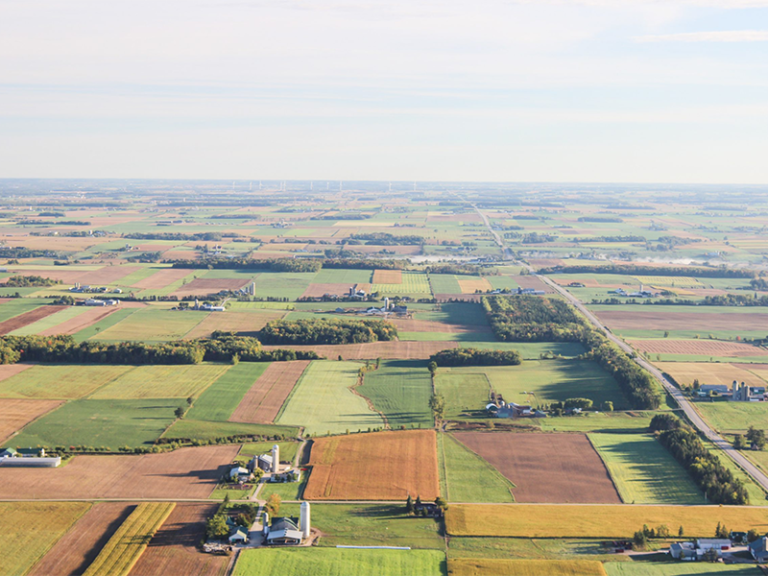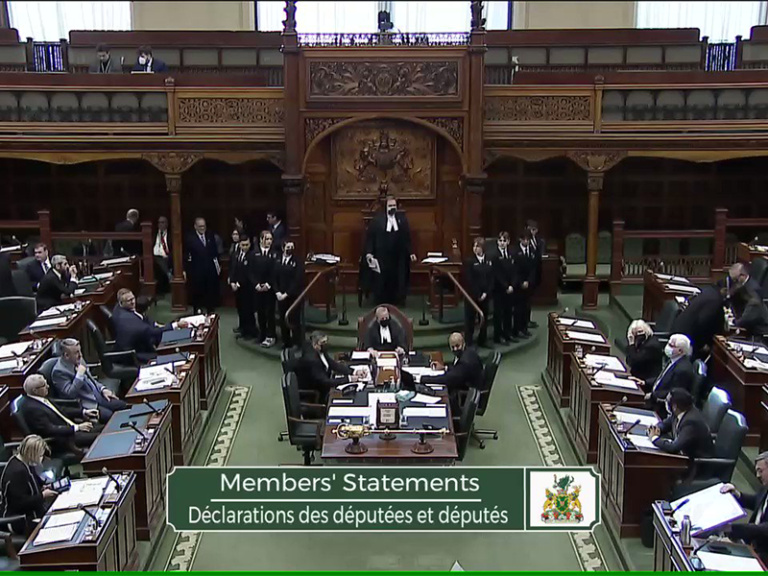First published: Friday, November 12, 2004
by Keith Oliver
The exhibit, “Massive Change”, which opened yesterday in Vancouver,
considers the accomplishments and failures of the modern world and it asks
the question “now that we can do anything, what will we do?”. Out of the
same concern, this question is being asked by many across Ontario as the
future of human settlements is being re-considered. One of the mistakes
made in the past was to embrace the private automobile to the virtual
exclusion of all other forms of transportation. The consequences for our
quality-of-life have been profound.
The automobile versus human scale.
When we think of the effect of the automobile we often think of the
increase in personal inconvenience as congestion increases. Despite the
fact that cars move us around in one-tenth the time it would take to cover
the same distance on foot, we have developed a set of expectations relative
to what we see as a car’s unmitigated potential. If a red light lasts for
more than 45 seconds we start to get irritated. Longer than 60 seconds and
the town engineer is bombarded with complaints. At the same time we ignore
the fact that the automobile has allowed us to travel five times further in
half the time.
When infill or new development is proposed in low-density residential areas
with single-family houses facing underused streets, the near universal
reaction by local residents is to protest, based on a possible future
increase in traffic. The irony is that in higher density residential areas
with higher traffic counts, and especially where dwellings do not face the
street, such concerns are seldom expressed. In real town planning, the
public sense of satisfaction or dissatisfaction is recognized as having to
do more with perception than with reality, but such perceptions are
respected. It is the denial of the importance of public perception that has
caused the dehumanization of modern human settlements.
In downtown Cobourg the complaint is often heard about the perceived lack
of parking, despite the fact that there are hundreds of underused parking
spaces within a shorter walking distance from car to store than one would
experience at the Mall. The difference has to do with how direct the path
to the destination is, and just when one experiences “a sense of arrival”.
At the Mall one has “arrived” when one enters the Mall vestibule. On King
Street one has arrived when one enters the store.
Town planning which respects human perception versus reality.
In town planning terms the most important effect that our increased use and
dependency on the automobile has had is on the loss of the perceived human
scale of public spaces. Like most other perceptions the best way to
illustrate this is by contrasting examples. King Street in the area of
Victoria Hall has a comfortable and attractive human scale. Division or
William Streets, north of the railway underpass, do not. The difference is
the way in which buildings on either side of the road enclose and form the
public space, and the speed of traffic. On King Street the near ideal ratio
of building height to the distance between opposing buildings is 40/70,
which is the same as the Greek concept of the Golden Mean. On Walton Street
in Port hope the ratio is the same.
Despite the perception that one is safer walking on the sidewalk on King
Street than on Division or William, historical evidence tells us one is
equally safe in both situations. In town planning perception is reality and
it is perception that must be respected and planned for.
The influence of traffic engineers on the townscape.
A factor that has worked in favour of the loss of human scale in public
spaces over the past 100 years is the increasing influence of traffic
engineers, as opposed to town planners, in the matter of road design, and
consequently, the design of most public spaces. The automobile has become
so revered that we have allowed the design of roads inside human
settlements to conform to the standards developed by the American
Association of State Highway and Transportation Officials (AASHTO), instead
of the sensitivities of true town planners.
An example that confirms this misplaced responsibility is the fact that
when King Street was redeveloped, the narrowing of the roadway and the
widening of the sidewalks was strongly resisted. The so-called
“improvements” were extended to the west side of King and William, where
the radius of the corners was increased to speed up the flow of traffic
making a turn to the West. There was no consideration given to the fact
that many people walking to the library cross at that corner, or that the
two apartment buildings on that corner are home to a large number of
seniors. If anything, the corners should have been rebuilt at smaller radii
to slow down the speed of vehicular traffic.
New standards must be established for Area C.
This raises the question of what must be done to ensure that the
development of Area C, and the possible redevelopment of the rest of the
Cobourg, results in public spaces that are designed for people at a human
scale, as opposed to public spaces designed for the automobile.
To ensure that this happens, Cobourg must create road design standards that
represent both a break from the AASHTO Standards and an acknowledgment that
within the boundaries of the Town, traffic must flow as smoothly as
possible but at much lower speeds. It should be understood that as long as
a vehicle is moving the driver is usually satisfied.
From a town planning perspective and to re-establish public spaces with a
human-scale, streets must be as narrow as possible, and other design
devices must be used such as reducing the width and number of lanes at
intersections and the introduction of modified roundabouts. At
intersections with signal lights, preference must be given to pedestrians,
as well as the eventual introduction of changes to the signal light pattern
that will give priority to cyclists turning across lanes of vehicular
traffic.
There is now clear evidence, much of it offered by the American Institute
of Transportation Engineers, that vehicular caused injury accidents are
related to vehicular speed, and vehicular speed is a function of street
width and road alignment. Acknowledging this, many American cities
including Portland, Oregon, have reduced the width of residential streets
with two way traffic and parking on both sides, to 24 feet, which is six
feet less than Cobourg’s standards. Another benefit is that narrower
streets mean less asphaltk, and less asphalt means lower maintenance and
replacement costs to Cobourg and its property tax payers.
Next week’s article will deal with the planning attention that must be
given to the interaction between the overall design of the town’s road
system and land-use. The goal is to ensure that as Cobourg’s road system
develops, the traffic pattern will continue to offer one of the highest and
best levels of choice achieved in any town of its size in Ontario.
Keith Oliver can be reached at 905-377-0107 or oliver.symons@sympatico.ca,
and is available to speak with groups of interested individuals.
Note: Part 15


